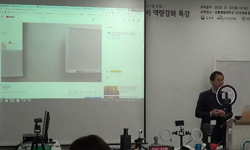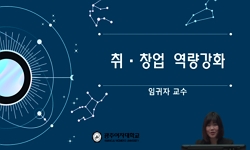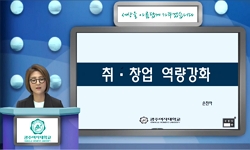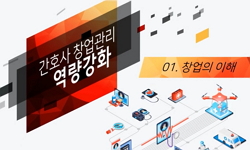There are various meanings and values in heritage, and it is important to interpret and explain properly the various values of heritage in an equal position. The Ename Charter(2008), adopted by the International Council on Monuments and Sites(ICOMOS),...
http://chineseinput.net/에서 pinyin(병음)방식으로 중국어를 변환할 수 있습니다.
변환된 중국어를 복사하여 사용하시면 됩니다.
- 中文 을 입력하시려면 zhongwen을 입력하시고 space를누르시면됩니다.
- 北京 을 입력하시려면 beijing을 입력하시고 space를 누르시면 됩니다.
세계유산 전문인력 역량강화를 위한 가상박물관 활용방안 연구 : 제주 화산섬과 용암동굴 해석콘텐츠를 중심으로 = A Study on Utilization of Virtual Museum for Building Capacity of World Heritage Professionals : Focused on Interpretation Content of Jeju Volcanic Island and Lava Tubes
한글로보기https://www.riss.kr/link?id=T16598205
- 저자
-
발행사항
서울 : 한국전통문화대학교 문화유산전문대학원, 2023
-
학위논문사항
학위논문(석사) -- 한국전통문화대학교 문화유산전문대학원 , 문화유산산업학과 디지털콘텐츠기획전공 , 2023. 2
-
발행연도
2023
-
작성언어
한국어
-
주제어
세계유산 전문인력 ; 역량강화 ; 가상박물관 ; 해석콘텐츠 ; 디지털 테크놀로지 활용
-
발행국(도시)
충청남도
-
형태사항
; 26 cm
-
일반주기명
지도교수: 이종욱
-
UCI식별코드
I804:44031-200000666090
- 소장기관
-
0
상세조회 -
0
다운로드
부가정보
다국어 초록 (Multilingual Abstract)
There are various meanings and values in heritage, and it is important to interpret and explain properly the various values of heritage in an equal position. The Ename Charter(2008), adopted by the International Council on Monuments and Sites(ICOMOS), emphasized the need for all-round activities to enhance public understanding and awareness in terms of heritage interpretation.
The interpretation and explanation of heritage using digital technology can more clearly convey the authenticity and value of heritage compared to analog data, and can be visually provided by integrating various value information of heritage. Digital capacity to deal with these characteristics can be an essential competency of professionals to interpret and explain heritage, and the use of digital technology can function as a way to interpret and explain heritage and an essential factor to build capacity of heritage professionals.
Heritage professionals are in a position to plan and provide content to inform the general public of the value of heritage, and are in a social situation where digital capabilities must be exercised in various fields such as heritage management, education and research. As such, the digital utilization capability of heritage professionals is essential, and in particular, the role of practical professionals, including field managers, is important for the correct interpretation of heritage. As an effective method of building the capacity of professional manpower, it is necessary to appropriately utilize content applied with digital technology.
In this study, utilization of virtual museum for building capacity is presented. The target to be applied to the virtual museum was limited to Jeju World Heritage in natural among World Heritage sites, and the target of capacity building using the virtual museum was set as World Heritage professionals. In addition, in order to clearly convey the contents of the study, "digital content for heritage interpretation, that is, created in digital form to increase the utility of interpretation" was named ‘interpretation content’.
In this study, the current status of building World Heritage capacity and Jeju World Heritage interpretation content was analyzed through literature surveys and Jeju field surveys, and research related to virtual museums was conducted together. After that, the current status and limitations of building World Heritage capacity were derived. In addition, in order to supplement this, a curriculum using virtual museum was planned for world heritage professionals, and an evaluation was conducted to verify the validity of the curriculum contents. The evaluation was conducted by FGI to evaluate the educational curriculum and to examine the need for digital capabilities of World Heritage professionals, and the significance and effectiveness of the virtual museum proposed in this study were verified through analysis and review of the evaluation results.
With the advent of the 4th industrial revolution, various content combined with digital technology are being proposed. In this situation, the utilization of digital technology can function as an essential factor to practice building capacity. This study proposes the use of virtual museums as an effective method of interpretation and presentation of heritage, and suggests ways to build the capabilities of World Heritage professionals.
국문 초록 (Abstract)
유산에는 다양한 의미와 가치가 존재하며, 유산이 가지고 있는 다양한 가치를 동등한 위치에서 전달할 수 있는 올바른 해석과 설명이 중요하다. 국제기념물유적협의회(International Council on Mon...
유산에는 다양한 의미와 가치가 존재하며, 유산이 가지고 있는 다양한 가치를 동등한 위치에서 전달할 수 있는 올바른 해석과 설명이 중요하다. 국제기념물유적협의회(International Council on Monuments and Sites, ICOMOS)에서 채택한 에나메헌장(2008)에서는 유산 해석 측면의 대중적 이해도와 인식 제고를 위한 전방위적 활동의 필요성을 강조하였다.
디지털 기술을 활용한 유산의 해석과 설명은 아날로그 자료와 비교했을 때 유산의 진정성 및 가치를 보다 명확하게 전달할 수 있으며, 유산이 가지고 있는 다양한 가치 정보를 통합하여 시각적으로 제공할 수 있다. 이러한 특성을 다루기 위한 디지털 역량은 유산을 해석하고 설명하는 전문인력의 필수적 역량이 될 수 있으며, 디지털 기술의 활용은 유산의 해석과 설명을 위한 방안이자 유산 전문인력의 역량 강화를 실천할 수 있는 필수적 요인으로 기능할 수 있다.
유산 전문인력은 일반 대중에게 유산에 대한 가치를 알리기 위해 콘텐츠를 기획하고 제공하는 위치에 있으며, 유산의 관리부터 교육과 연구 등의 다양한 분야에서 디지털 역량을 발휘해야 하는 사회적 상황에 놓여 있다. 이처럼 유산 전문인력의 디지털 활용 역량은 필수적이며, 특히 유산의 올바른 해석을 위해서는 현장관리자를 포함한 실무 전문인력의 역할이 중요하다. 이러한 전문인력 역량강화의 효과적인 방법으로써 디지털 기술을 적용한 콘텐츠의 적절한 활용이 필요하다.
본 연구에서는 가상박물관을 활용한 역량강화 방안을 제시하고 있다. 가상박물관에 적용할 대상은 세계유산 중에서도 제주 세계자연유산으로 한정하였고, 가상박물관을 활용한 역량강화 대상은 세계유산 전문인력으로 설정하였다. 또한 연구의 내용을 명확하게 전달하기 위하여 “유산 해석을 위한 디지털콘텐츠, 즉 해석의 효용을 높일 수 있도록 디지털 형태로 제작한 것”을 ‘해석콘텐츠라고 명명하였다.
본 연구에서는 문헌조사와 제주 현지조사를 통해 세계유산 역량강화 현황 및 제주 세계유산 해석콘텐츠 현황을 분석하였으며, 역량강화 방법으로 제안한 가상박물관 관련 연구 조사를 함께 진행하였다. 이후 세계유산 역량강화 실태 및 한계점을 도출하고 이를 보완할 수 있는 가상박물관 활용 세계유산 전문인력 대상 역량강화 교육 커리큘럼을 설계하였으며, 교육 커리큘럼 내용의 타당성 검증을 위해 전문가 평가를 진행하였다. 평가는 실제 세계유산 실무 전문인력을 대상으로 FGI를 통한 교육 커리큘럼의 평가와 세계유산 전문인력의 디지털 역량 필요성에 대한 인식 조사를 함께 실시하였으며, 평가 결과 분석 및 고찰을 통해 세계유산 전문인력의 디지털 역량 필요성을 확인하고 본 연구에서 제안한 가상박물관의 유의미성과 효과성을 검증하였다.
4차 산업혁명의 도래와 함께 디지털 테크놀로지와 결합한 다양한 콘텐츠 방안이 제시되고 있는 상황에서 디지털 기술의 활용은 역량강화를 실천할 수 있는 필수적 요인으로 기능할 수 있다. 본 연구에서는 효과적 유산 해석과 설명 방법으로써 가상박물관의 활용을 제안하며, 이를 통해 세계유산 전문인력 역량강화를 위한 방안을 제시하고자 한다.
목차 (Table of Contents)
- Ⅰ. 서 론 1
- 1. 연구 배경 1
- 2. 연구 필요성 및 목적 2
- 1) 연구 필요성 3
- 2) 연구 목적 4
- Ⅰ. 서 론 1
- 1. 연구 배경 1
- 2. 연구 필요성 및 목적 2
- 1) 연구 필요성 3
- 2) 연구 목적 4
- 3. 연구 대상 5
- 1) 적용 대상 5
- 2) 역량강화 대상 8
- 3) 관련 개념 9
- 4. 연구 방법 12
- Ⅱ. 현황 분석 14
- 1. 세계유산 역량강화 현황 14
- 1) 세계유산 전문인력 역량강화 사례 14
- 2) ICT 활용 세계유산 역량강화 사례 21
- 2. 세계유산 제주 화산섬과 용암동굴 현황 24
- 1) 세계유산 제주 화산섬과 용암동굴 24
- 3. 세계유산 제주 화산섬과 용암동굴 디지털 활용 실태 28
- 1) 세계유산 제주 화산섬과 용암동굴 일대 현황 29
- 2) 세계유산 제주 화산섬과 용암동굴 해석콘텐츠 현황 33
- 4. 세계유산 역량강화를 위한 해석콘텐츠 분석 41
- 1) 세계유산 제주 화산섬과 용암동굴 해석콘텐츠 분석 41
- 2) 세계유산 제주 화산섬과 용암동굴 해석콘텐츠 평가 44
- 3) 소결 46
- Ⅲ. 관련 연구 47
- 1. 가상박물관 연구 47
- 1) 가상박물관 정의에 관한 연구 47
- 2) 가상박물관 활용에 관한 연구 56
- 3) 소결 57
- 2. 가상박물관 활용 교육 설계를 위한 학습모형 58
- 1) 참여적 박물관(The Participatory Museum) 58
- 2) 프로젝트 기반 학습(Project-Based Learning) 59
- 3) 소결 60
- Ⅳ. 역량강화 방법론 61
- 1. 가상박물관을 활용한 세계유산 역량강화 방안 61
- 1) 가상박물관을 활용한 세계유산 해석콘텐츠 61
- 2) 세계유산 전문인력 역량강화 교육 커리큘럼 설계 62
- Ⅴ. 평가 67
- 1. 평가 대상 67
- 2. 평가 방법 67
- 1) 평가 도구 67
- 2) 평가 절차 68
- 3) 평가 설문지 69
- 3. 평가 결과 72
- 1) 교육 커리큘럼 평가 결과 72
- 2) 디지털 역량 필요성 인식조사 결과 75
- 3) 소결 82
- Ⅴ. 결론 및 제언 84
- 참고문헌·누리집 86
- Abstract 91
- 부 록 93
- 부록 1 제주 화산섬과 용암동굴 세계유산 해석콘텐츠 93
- 부록 2 교육 커리큘럼 평가 및 디지털 역량 필요성 인식 조사를 위한 설문지 96












